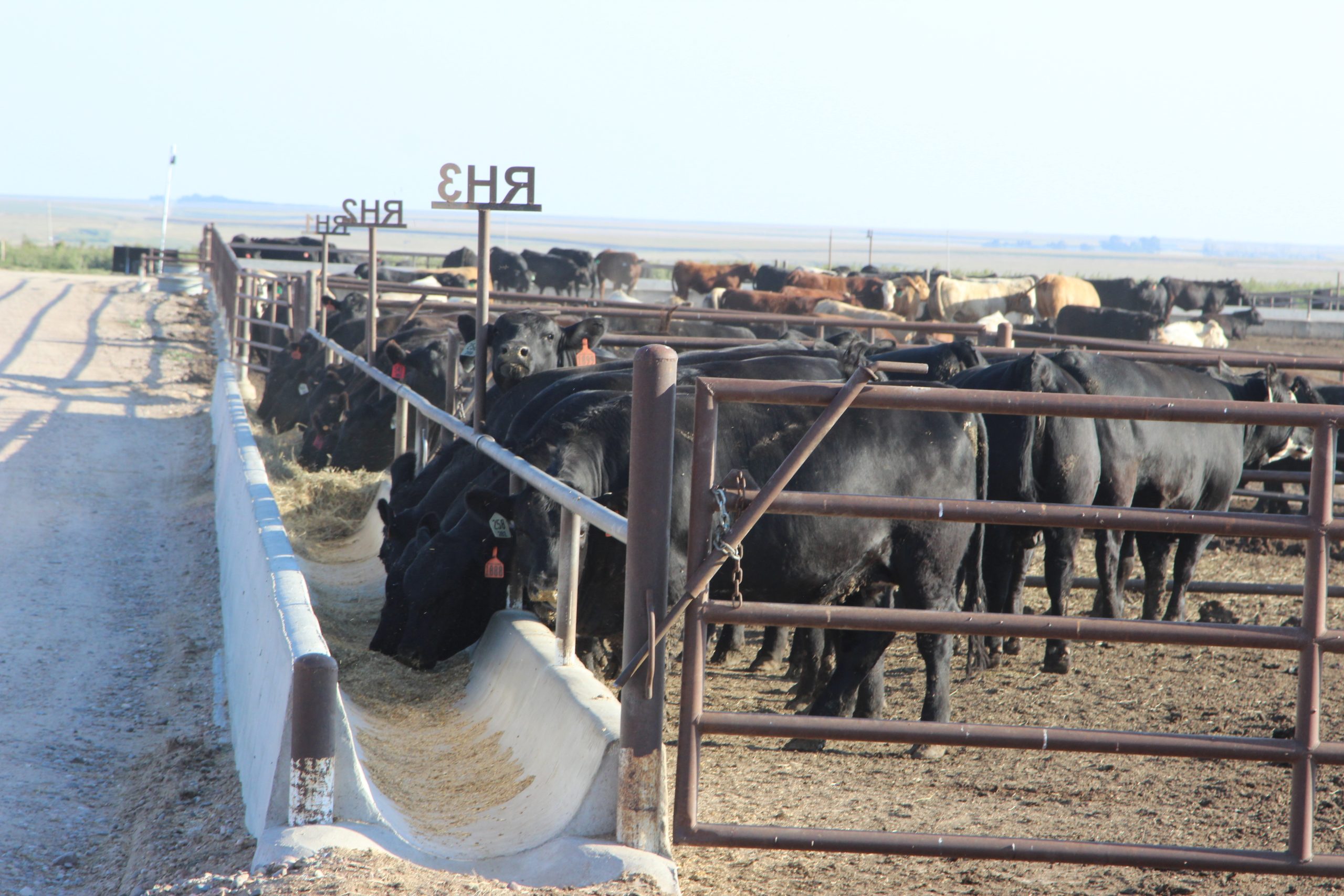The latest United States Cattle on Feed report showed a small increase in numbers of cattle going through the nation’s larger feedlots during July, according to the U.S. Department of Agriculture, which released the report on Aug. 23.
The number of cattle and calves on feed for the slaughter market for feedlots with capacity of 1,000 or more head of cattle totaled 11.1 million head as of Aug. 1, which was a slight increase from the Aug. 1, 2023, figure of 11.06 million head. (The photo above was taken in August 2024 at Hy-Plains near Montezuma, Kansas.)
“The report overall was neutral without major surprises,” said Glynn Tonsor, a Kansas State University professor and Extension specialist for livestock and meat marketing.

Cattle on feed are steers and heifers being fed a ration of grain, silage, hay and/or protein supplement for the processing market that are expected to produce a carcass that grades select or better. It excludes cattle that are “backgrounded only” for later sale as feeders or later placement in another feedlot.
The top three
Texas, Nebraska and Kansas were the top three states for cattle at 2.74 million, 2.32 million and 2.21 million head, respectively.
Placements in feedlots during July totaled 1.7 million head, 6% above 2023, which had a count of 1.608 million head. Net placements were 1.65 million head. During July, placements of cattle and calves weighing less than 600 pounds were 390,000 head, 600 to 699 pounds were 265,000 head, 700 to 799 pounds were 385,000 head, 800 to 899 pounds were 387,000 head, 900 to 999 pounds were 200,000 head, and 1,000 pounds and greater were 75,000 head.
Placements are steers and heifers put into a feedlot, fed a ration that will produce a carcass that will grade select or better and are intended for the slaughter market.
Marketings
Marketings of fed cattle during July totaled 1.86 million head, 8% above 2023, which shows 1.72 million head. Markets are steers and heifers shipped out of feedlots to a slaughter market.
“I also think placement and marketing numbers in part reflected a longer month in July,” Tonsor said, explaining that July 2024 had two more weekdays than July 2023 and one more calendar day than June 2024.
Cowherd not in expansion mode
Tonsor said the feedlot numbers are also coming at a time when the nation’s cowherd has not increased. As previously noted, drought in prime cow-calf regions and higher interest rates have limited ranchers, and with higher prices they have taken advantage of selling opportunities.
“I do not believe the national herd has initiated expansion at this point,” Tonsor said, adding that he does not see expansion occurring before summer 2025.
His advice to cattle producers is to continue to weigh opportunities, but keep an eye on risk factors.
“It seems likely that all markets (equity, commodity and otherwise) are in for some elevated volatility in coming months,” Tonsor said. “Given that risk is two-sided (upward and downward price movements are possible) this itself is not a bad thing but rather is important to monitor and, if desired, to be willing to act.”
The report adds that the “other disappearance” category totaled 56,000 head during July, 14% below 2023, which was pegged at 65,000 head. Other disappearance includes death loss, movement from feedlots to pasture and shipments to other feedlots for further feeding.
Dave Bergmeier can be reached at 620-227-1822 or [email protected].



